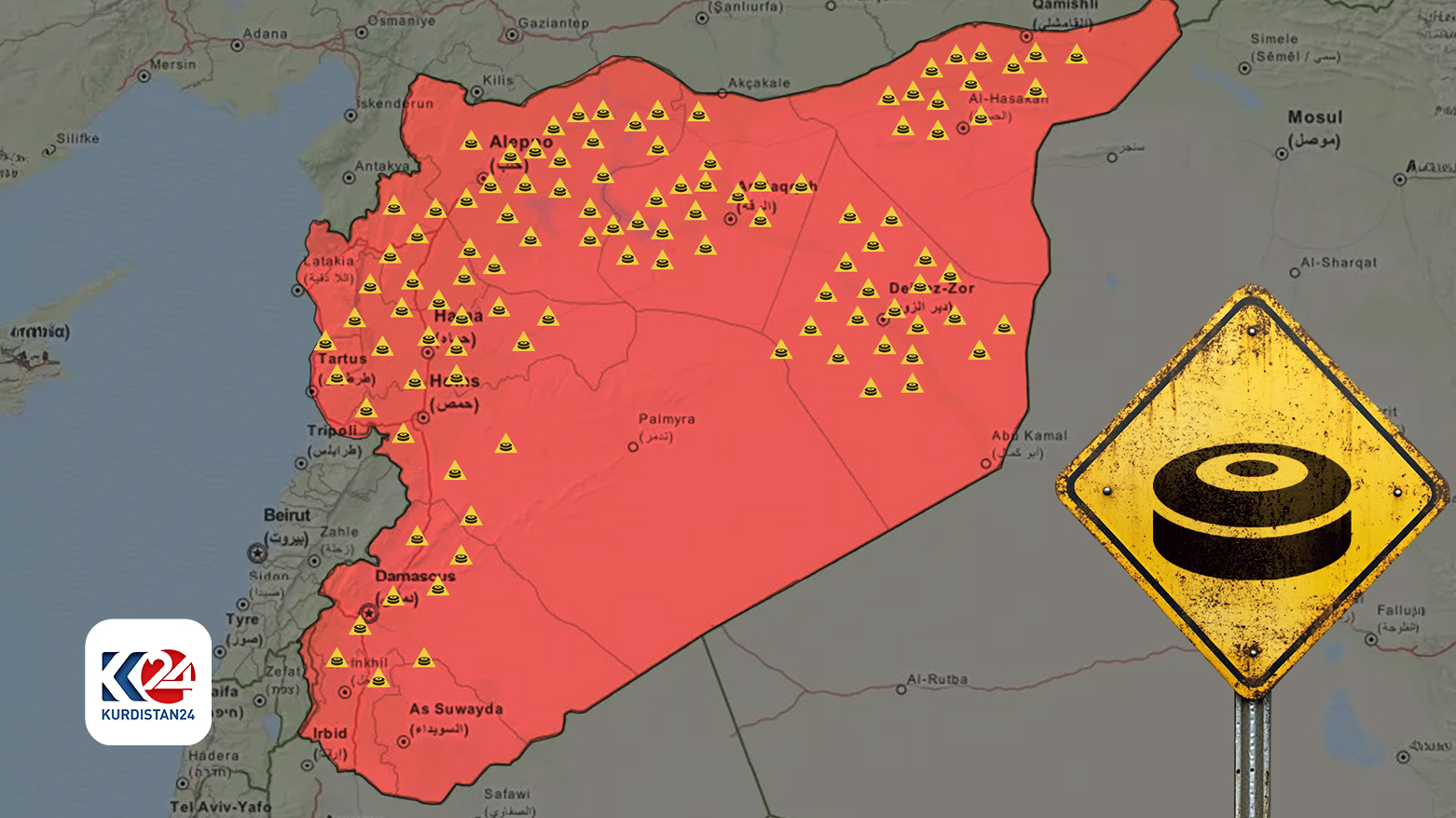War Remnants in Syria: Lingering Threat to Civilians
Reports that since the beginning of 2025, 182 civilians have been killed by explosive remnants, including 33 children and six women.

ERBIL (Kurdistan24) – More than two months after the fall of the Assad regime in December 2024, the remnants of war continue to pose a fatal threat to civilians across Syria.
While active hostilities have subsided, landmines and unexploded ordnance are still killing and maiming innocent people, turning once-inhabited areas into death traps.
Despite efforts by humanitarian organizations to clear contaminated sites, the danger remains alarmingly high, particularly for children, farmers, and shepherds.
A Child’s Play Turns into Tragedy
In one of the most recent incidents, an explosion rocked the village of Hamar al-Ali in western Deir ez-Zor northeast Syria (Rojava).
A group of children unknowingly played with an unexploded device left behind from previous battles.
What should have been an ordinary day ended in heartbreak—one child lost his life, and three of his siblings were severely injured. The attack underscores a grim reality: even after the guns have fallen silent, Syria's war continues to claim victims.
The Syrian Observatory for Human Rights (SOHR) reports that since the beginning of 2025, 182 civilians have been killed by explosive remnants, including 33 children and six women, while 227 others have been injured, among them 103 children and three women. The numbers continue to climb as vast areas remain riddled with deadly remnants of war.
Silent Killers Hidden Beneath the Soil
The threat of unexploded ordnance extends far beyond a single tragic event.
These deadly remnants are scattered across Syria, particularly in areas previously controlled by government forces, the Syrian Democratic Forces (SDF), and Turkish-backed factions. According to SOHR statistics:
Government-held areas have seen the highest casualties, with 141 deaths, including 25 children and three women. Among them, six individuals, including a child and a woman, were killed while gathering truffles in the desert—a seasonal activity that has turned into a gamble with death.
Autonomous Administration-controlled areas recorded 11 fatalities, including five children and a woman, while 30 others, mostly children, have been injured.
Opposition-held areas controlled by Turkish-backed armed groups reported 30 deaths, including three children and two women, with 42 injuries, among them 17 children.
Efforts to Clear the Hidden Killers
As the scale of the crisis grows, demining teams have intensified their operations, focusing on Idlib, northwest Syria (Rojava), Hama, Deir ez-Zor, and Latakia. Since January, 138 hazardous sites have been identified, with more than 1,400 explosive remnants neutralized.
However, despite efforts, the crisis continues to escalate. Civilians who rely on farming and livestock for survival remain among the most vulnerable, with more than 60 people killed and 90 injured since January while working in the fields or tending their animals.
Calls for Urgent International Action
As the toll of war remnants grows, humanitarian organizations are calling for immediate international intervention. The United Nations Office for the Coordination of Humanitarian Affairs (OCHA) reported on February 13 that more than 430 civilians had been killed or injured by unexploded ordnance since the start of the year, with children making up nearly a third of the victims.
The War May Have Ended, But the Danger Remains
While the guns have gone silent, the remnants of Syria’s brutal conflict continue to inflict suffering on innocent civilians. Every field, every abandoned home, and every narrow alleyway in once-war-torn cities holds the potential for devastation.
Until systematic and widespread demining efforts take place, the war’s legacy will persist—taking lives, devastating families, and hindering Syria’s path to recovery.
